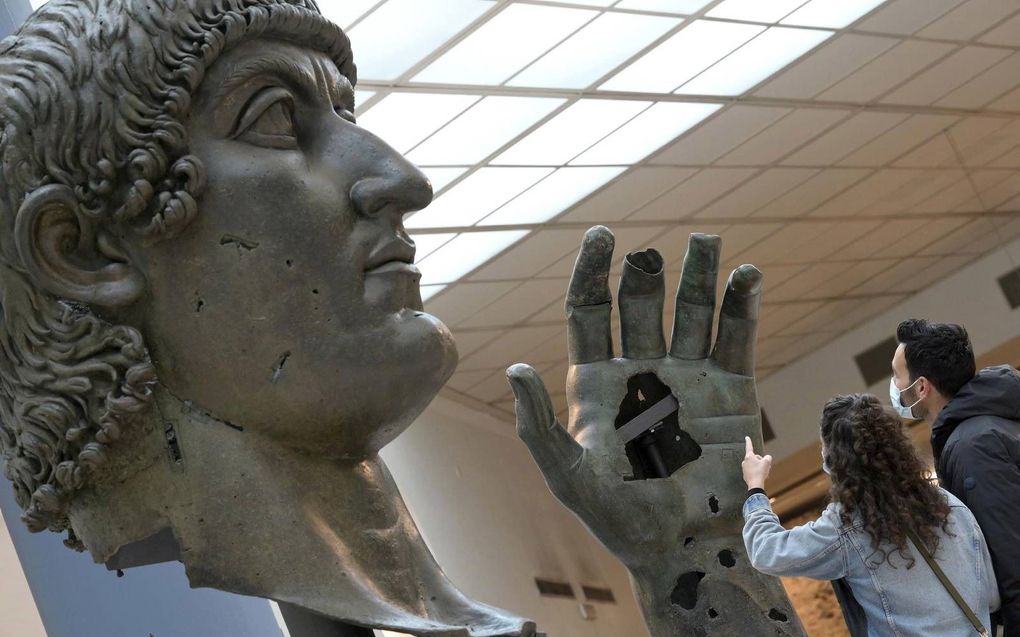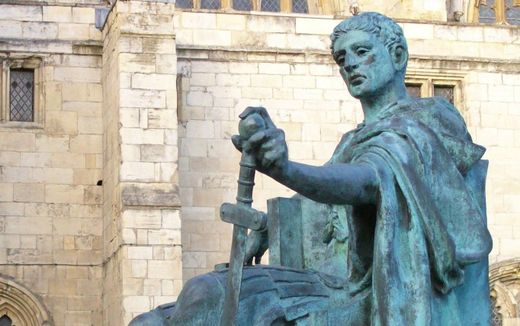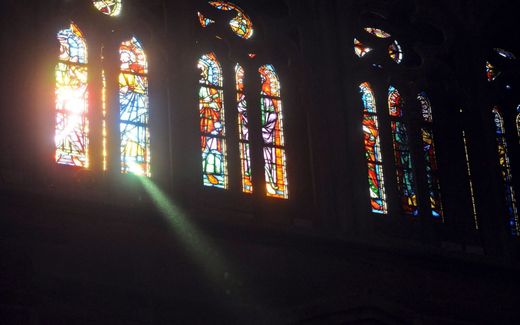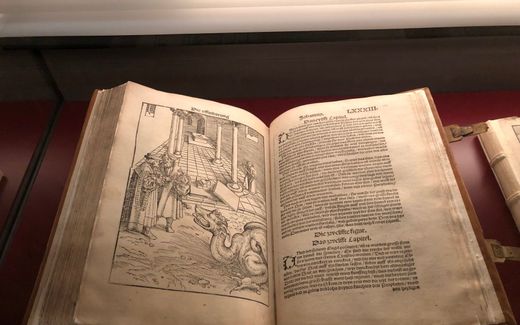The finger of Constantine the Great
22-07-2022
Southern Europe
Maarten Stolk, RD

Photo EPA, Claudio Peri
Southern Europe
In one lifetime, Christianity in the Roman Empire changed from a persecuted religious community to the dominant religion. This is partly because of Emperor Constantine the Great, who was born in 272, 1750 years ago.
Since last year, the bronze Emperor Constantine in the Capitoline Museums in Rome has temporarily his left index finger back. The Louvre in Paris is lending the 38-centimetre-long index finger for the time being for five years.
The statue of the Roman emperor consists of a head, a globe and the left hand. The index finger was missing for a long time until it was discovered in Paris in 2018. In France, the finger is accidentally categorised as a "toe", but French scientist Aurélia Azéma, during her research on bronze statues, discovers that the object must be Constantine's missing index finger. It is now temporarily attached to the emperor's hand.
Although the colossal statue is still incomplete, it gives an impression of the power of this first Christian emperor, who was born on February 27th, 272 - it may also have been 273 - in an army camp in what is now Serbia. His father, Constantius, later ruled over Britain and Gaul; his mother, Helena, was a Christian.
Around 300, there were no signs that the position of Christians in the Roman Empire would change soon. Under Emperor Diocletian, Christians again faced persecution because they refused to acknowledge him as a deity and did not participate in the emperor's obligatory cult. But these persecutions were not very effective because there were now too many Christians: estimated at almost one-tenth of the population.
Conversion
Constantine follows in his father's footsteps as an army leader. It is not entirely clear when he became a Christian. Possibly, Constantine made a cautious choice for Christianity in the course of 311 or the spring of 312.
Then there is also a dream, or perhaps a sign in the sky. Constantine is told or seen that he will defeat his rival Maxentius if he openly expresses support for the Christian God. The imperial banner, shields and helmets will bear the Christogram, an abbreviation of the Greek word "Christos". In this sign, he will be victorious. Constantine defeats Maxentius at the Milvian Bridge, just outside Rome. A triumphal arch next to the Colosseum still commemorates this victory.
To this day, doubts remain about Constantine's conversion. Why did he, as a Christian, not distance himself more clearly from paganism? His triumphal arch in Rome and the minted coins were decorated with pagan images. Christian morals also seem to have little effect on Constantine. The emperor had his wife and son put to death, continued to bear the title "pontifex maximus" - highest priest - and left certain pagan cults untouched. Only on his deathbed did Constantine allow himself to be baptised.
Many historians see Constantine's conversion as a slow process during which the emperor exercised the necessary political caution: Christians rarely formed most of the population in Roman cities.
Fall
Be that as it may, the Battle of the Milvian Bridge in 312 marks a turning point in history. Constantine felt protected by God and called to reunite the entire empire under His leadership. Not much later, Christians were allowed to practice their religion openly. And the population was given one day of rest per week: Sunday.

The care for the poor, encouraged by Constantine, caused an influx of new Christians. His preference for Christians in official appointments also makes the church attractive. By the middle of the fourth century, most of the population was Christian. Emperor Theodosius I declares Christianity the state religion in 391.
During Constantine's reign, the face of Roman Christianity changes permanently. The most far-reaching change is the connection between Christianity and state power, which significantly increases the wealth and political influence of the church.
Doorkeeper
When Constantine feels the end of his life approaching, he first wants to be baptised, according to his biographer Eusebius of Caesarea. Then his soul will be cleansed "from the errors he committed as a mortal man." The emperor decides to travel to the Holy Land to be baptised in the Jordan, like Jesus. He never got further than Nicomedia, a city near Constantinople (today's Istanbul). There Constantine, as the first emperor ever, received baptism.
Caesar Flavius Valerius Aurelius Constantinus Augustus dies on 22 May 337. His sarcophagus is placed in the Church of the Holy Apostles in Constantinople. Precisely in the middle of the twelve monuments to the apostles, as determined during his life.
Constantine's funeral shows that much has changed in the Christian Church within a few decades. "Emperors should be buried in a place that reflects their real position in the church", the church father Chrysostomus later complained. "Not as apostles, but as doorkeeper."
Millions for a church building
After his victory at the Milvian Bridge in 312, Constantine remained in Rome for no more than four months, but that was long enough to pump thousands of solidi into church building. These places of worship are visible signs of the victory of Christianity.
More and more churches were needed, especially after the Edict of Milan was issued in 313. Freedom of religion came, and Christianity was given a privileged position. More and more people say farewell to paganism.
Constantine's master builders chose the form of a basilica, which the Romans used as a market hall, throne room or courtroom: an elongated rectangular nave, a public space with an entrance, and an apse, a semicircular space. Aisles parallel to the nave but lower provide space for chapels. The rectangular model would determine the shape of church buildings in Europe until well after the Middle Ages.
The most famous churches built by Constantine are the Church of the Nativity in Bethlehem, the Church of the Holy Sepulchre in Jerusalem and St Peter's in Rome. The original churches have all disappeared due to wars and fires.
Trivial issue at Nicea
Emperor Constantine the Great convened the first ecumenical council of the Christian Church in the year 325. More than 300 bishops from throughout the Roman Empire came to Nicea (now Iznik, not far from Istanbul) to discuss, among other things, the relationship of Christ, the Son, to the Father. Was Christ one in essence ("homoousios") with God the Father or merely "homoiousios", similar to?
The council condemned the views of the priest, Arius from Alexandria, as heresy. In the Nicene Creed - the most widely read "imperial" document in history - the Church confesses that Jesus is one in essence with the Father. Christ is the eternal Son of God, born but not made.
What role Constantine plays in Nicea is not entirely clear. In any case, he gave a welcome speech in Latin. The emperor stands by the council's pronouncements, though in a letter to the bishops, he calls the controversy over the teaching of Arius a "trivial matter."
In any case, Constantine states that the voice of the bishops present is equal to the voice of God. The emperor sends a letter to the churches threatening death to anyone who possesses a scripture by Arius and refuses to burn it.
This article was translated by CNE.news and previously published in Dutch daily Reformatorisch Dagblad on February 25th, 2022.
Related Articles





